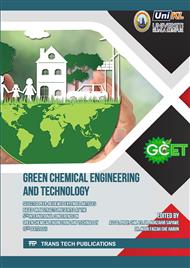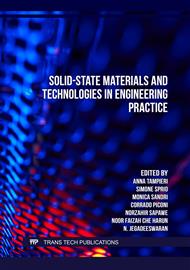p.27
p.33
p.47
p.55
p.63
p.71
p.83
p.89
p.101
Effect of Newly Isolated Cronobacter Sp. KP 19 from Kuantan Port on Mild Steel Corrosion under Nitrate Reducing Condition
Abstract:
Corrosion of mild steel has been attributed to the respiratory activity of microbes under different growth conditions. Under nitrate-reducing condition, nitrate-reducing bacteria were postulated to inhibit corrosion, yet existing literatures reported contradicting findings. Newly isolated Cronobacter sp. KP 19 from Kuantan Port is capable of reducing ferric iron (Fe3+) and nitrate (NO3-) as electron acceptors. To investigate the effect of Cronobacter sp. KP 19 on mild steel corrosion under nitrate-reducing condition, the Cronobacter sp. KP 19 was cultured as nitrate-reducing facultative bacteria in a defined growth M1 media amended with 15 mM of sodium nitrate as the sole electron acceptor. Mild steel coupons were immersed in growth media for 46 days. The deteriorations of the mild steel coupons were then evaluated by corrosion rate analysis and the morphology was characterized via scanning electron microscopy (SEM) followed by X-ray diffraction (XRD) analyses. Our results indicated that under nitrate-reducing condition, Cronobacter sp. KP 19 remarkably accelerates the corrosion rates of mild steel by approximately ten folds. XRD analysis confirmed the formation of magnetite (Fe3O4) and vivianite [Fe3(PO4)2·8H2O] as the corrosion products. Results from current study provide insight on how facultative anaerobes affect the corrosion processes under different respiratory growth conditions.
Info:
Periodical:
Pages:
63-69
Citation:
Online since:
December 2022
Price:
Сopyright:
© 2022 Trans Tech Publications Ltd. All Rights Reserved
Share:
Citation:



